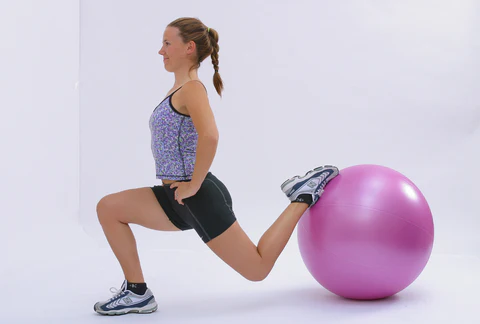Balancing exercise with cardio, strength, flexibility, and rest is essential for overall wellness, promoting both physical and mental health while preventing overtraining.
In this article, I’ll explore the importance of balance in exercise, why it’s essential for long-term well-being, and how achieving that balance has become my personal goal in understanding holistic health.
Exercise as a Pillar of Health and Wellness:

Exercise is one of the pillars of good health, providing numerous benefits to the body and mind. Engaging in regular physical activity promotes:
- Heart Health: Aerobic exercises strengthen the heart, reduce cholesterol levels, and help manage blood pressure.
- Muscle and Bone Strength: Weight-bearing exercises, strength training, and resistance workouts are crucial for building muscle mass and maintaining strong bones, especially as we age.
- Mental Clarity and Emotional Balance: Exercise has a profound impact on mental health, reducing symptoms of depression, anxiety, and stress. It releases endorphins, the “feel-good” hormones, which improve mood and overall emotional balance.
- Weight Management: Physical activity helps manage and maintain a healthy weight by burning calories and improving metabolism.
- Longevity: Numerous studies show that regular exercise can extend lifespan by reducing the risk of many chronic diseases.
However, the goal shouldn’t be just to exercise for the sake of exercising. It’s about finding a sustainable, enjoyable routine that enhances all aspects of health. This is why balance in exercise is so important.
Why Finding Balance in Exercise is Essential:
In fitness, balance doesn’t just refer to physical stability or equilibrium during workouts. It’s a deeper concept, encompassing the need for moderation, variety, and thoughtful recovery. Many people fall into the trap of over-exercising or under-exercising, both of which can have negative impacts.
- The Dangers of Over-Exercising: While working out hard and pushing yourself can feel rewarding, over-exercising can lead to burnout, chronic fatigue, and even injuries. Over time, excessive physical activity without adequate rest can affect the body’s ability to recover, weakening the immune system, disrupting sleep, and leading to hormone imbalances.
- The Effects of Under-Exercising: On the flip side, not getting enough exercise can lead to a sedentary lifestyle, which increases the risk of heart disease, obesity, diabetes, and other health problems. Sedentary habits also impair mental health, leading to feelings of sluggishness, fatigue, and even anxiety.
Achieving balance means recognizing that exercise is not just about intensity—it’s about sustainability, variety, and listening to your body. This ensures long-term progress without sacrificing well-being.
Also read: Different Types of Workouts – Finding the Best Fit for You!
Incorporating a Balanced Approach: The Types of Exercise You Need:
To create a balanced exercise routine, it’s important to incorporate various types of workouts. Each serves a different purpose and addresses different aspects of physical and mental health. Here’s a breakdown of the key exercise categories and their benefits:
Cardiovascular (Aerobic) Exercise:
- Purpose: Improves heart and lung health, increases endurance, and helps burn calories.
- Examples: Running, brisk walking, swimming, cycling, rowing, and dancing.
- How to Balance: Aim for 150 minutes of moderate-intensity or 75 minutes of high-intensity cardio per week, spread out over multiple days.
Strength Training (Resistance Exercise):
- Purpose: Builds muscle mass, strengthens bones, boosts metabolism, and improves joint stability.
- Examples: Weightlifting, bodyweight exercises (push-ups, squats, lunges), and using resistance bands.
- How to Balance: Include strength training exercises 2-3 times per week, ensuring you target different muscle groups on alternating days for recovery.
Flexibility and Mobility Work:
- Purpose: Increases range of motion in muscles and joints, helps prevent injuries, and improves posture.
- Examples: Stretching exercises, yoga, and Pilates.
- How to Balance: Incorporate 10-15 minutes of stretching after every workout or dedicate 1-2 days per week to flexibility training.
Balance and Stability Training:
- Purpose: Enhances coordination, improves core strength, and reduces the risk of falls (especially important as we age).
- Examples: Exercises like tai chi, balance board routines, or standing on one leg while performing daily activities.
- How to Balance: Include a few balance exercises in your weekly routine, especially if you have specific fitness goals like improving athletic performance or functional movement.
Rest and Recovery:
- Purpose: Allows muscles to repair and grow stronger, helps avoid overtraining, and restores mental and physical energy.
- How to Balance: Incorporate at least 1-2 rest days per week. Recovery can include activities like walking, light yoga, or meditation to promote relaxation and rejuvenation.
Nutrition: A Crucial Component of Balancing Exercise

While this article focuses primarily on exercise, it’s essential to understand the role that nutrition plays in balancing exercise and wellness. Your body needs the right fuel to perform well, recover quickly, and remain healthy. Here are key points to keep in mind:
- Pre-Workout Nutrition: Eating the right foods before exercise can provide the energy you need to get through your workout. Focus on complex carbohydrates for sustained energy and a moderate amount of protein to help muscles function properly.
- Post-Workout Nutrition: Your body requires essential nutrients after a workout to support recovery and repair.. Protein is essential for muscle repair, while carbohydrates help replenish glycogen stores.
- Hydration: Proper hydration is often overlooked but is essential for performance and recovery. Dehydration can lead to fatigue, dizziness, and muscle cramps. Ensure you’re drinking enough water before, during, and after exercise.
Mental Health and Its Connection to Physical Activity:
A balanced approach to exercise doesn’t just improve physical health—it plays a critical role in mental well-being. Here’s how:
- Exercise as a Stress Reliever: Physical activity triggers the release of endorphins, which act as natural stress relievers. Exercise can help alleviate anxiety, depression, and other mental health issues.
- Boosts Self-Confidence: Regular exercise leads to noticeable improvements in strength, stamina, and physical appearance. This can enhance self-esteem and confidence, making you feel empowered in other areas of life.
- Mindful Movement: Incorporating mindful practices like yoga or tai chi into your fitness routine encourages a connection between body and mind. These activities not only enhance physical strength and flexibility but also promote relaxation and mental clarity.
- Sleep Quality: Exercise can significantly improve sleep patterns, helping you fall asleep faster and enjoy deeper, more restorative sleep. In turn, good sleep enhances your body’s recovery process and mental sharpness.
Also read: What Do You Call Leveling Exercise – A Comprehensive Guide!
Setting Personal Goals for Balanced Exercise:
Creating balance in exercise is a highly individualized process. Your goals, fitness level, lifestyle, and preferences all play a role in shaping your routine. Here’s how to start:
- Define Clear Goals: Whether you aim to build muscle, improve cardiovascular fitness, enhance flexibility, or simply stay active, clearly defined goals will guide your workout plan.
- Create a Schedule: Consistency is key to balancing exercise. Develop a weekly workout plan that incorporates a variety of exercise types.. Be sure to factor in rest days and recovery time.
- Track Your Progress: Keeping track of your workouts and progress can help you stay motivated. It also allows you to adjust your routine as you gain strength and endurance.
- Listen to Your Body: Pay attention to signs of fatigue or discomfort. If you feel overly tired or experience pain, take a rest day or switch to a low-impact activity like walking or stretching.
- Stay Flexible: Your fitness routine should be adaptable. As life circumstances change or as your fitness level improves, be willing to modify your routine to maintain balance.
FAQ’s
1. Why is balancing exercise important for overall health?
Balancing exercise ensures that you incorporate variety, moderation, and recovery, which prevents injuries, burnout, and sedentary habits while promoting long-term wellness.
2. What are the dangers of over-exercising?
Over-exercising can lead to burnout, fatigue, weakened immune function, and injuries due to insufficient recovery time.
3. How does a balanced approach to exercise benefit mental health?
A balanced routine helps release endorphins, reduces stress, improves mood, boosts self-esteem, and enhances sleep quality.
4. What types of exercises should be included for a balanced routine?
A balanced routine includes cardio, strength training, flexibility exercises, balance training, and adequate rest for recovery.
5. How does nutrition play a role in balancing exercise?
Proper nutrition before and after workouts fuels your body, aids recovery, and helps optimize performance and muscle repair.
Conclusion
In conclusion, balancing exercise is key to long-term health and well-being, helping prevent burnout and overtraining. Incorporating a variety of activities like cardio, strength, flexibility, and adequate rest ensures sustainable progress. This balanced approach promotes overall fitness while minimizing the risk of injury. Paired with mindful nutrition and listening to your body’s needs, it supports a holistic path to wellness.
Related post
- Also read: Revolve Fit Guide – Your Ultimate Resource for Finding the Perfect Fit!
- Also read: Fit For Life: A Comprehensive Guide To Fitness And Wellness – A Step-by-Step Guide to Fitness and Wellness!
- Also read: Why Is Health And Fitness Important To The Communit – The Role of Fitness and Wellness!